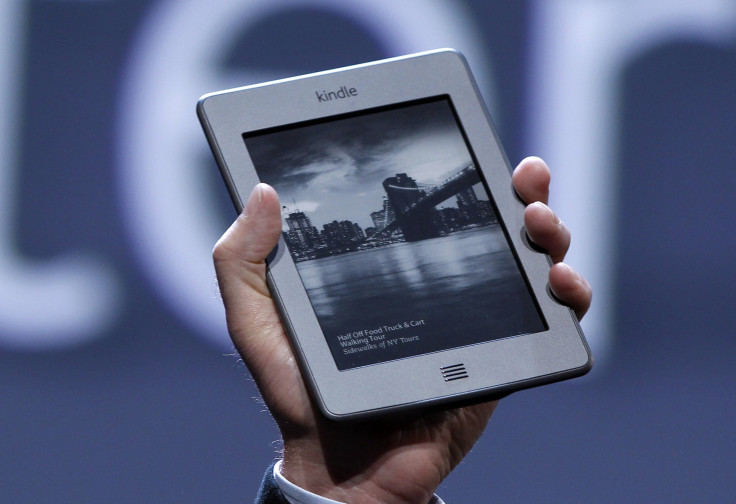Virtual Reality Kindle? Amazon Job Posting Hints At 3D Device

Virtual reality and augmented reality are the latest fields of development for tech companies everywhere. And according to a recent job posting, Amazon might be taking an unexpected approach to the platform.
Amazon posted a recent job listing seeking a Software Development Engineer for its Kindle team. Much of the listing features standard text about job requirements and skills, but as The Digital Reader pointed out, one passage sticks out.
Read: What's Coming To Amazon This Fall: Prime Services, Echo Dot, Alexa Gadgets
Here’s the relevant section of the job listing, via Amazon:
The Software Development Engineer must have delivered one or more of the below technology areas to customers:
· Graphics software compositing, video, images with hardware assist.
· Graphical User Interface toolkit with widget libraries adopting the MVC paradigm for event handling.
· Animation and Interactivity software for creating effects.
· Multi platform programming languages for 2D and 3D graphics rendering such as Core Graphics, Skia, OpenGL, Direct3D, Metal, Others.
· Application Execution Framework interfacing to multiple platforms.
· Animation and physics engines like Unity, Turbulenz, Others.
As Geekwire points out, 3D rendering and physics tools like OpenGL and Unity are commonly used in virtual reality and augmented reality development. With these tools, developers can produce in-app assets like 3D icons and objects that users can interact with and walk around. Augmented reality refers to applications that overlay information on the field of vision from a device like a smartphone camera.
It’s not yet clear what Amazon could do with augmented reality on Kindle products of if the platform could even make it to Kindle users. Augmented reality traditionally pairs a camera with a real-world object, so a possible application could be overlaying visual effects onto a physical book. As The Digital Reader also notes, the job was originally posted in 2016 and relisted only recently.
But against Amazon’s current product lineup, it’s possible to see where augmented reality could fit in for users. With the graphical requirements of augmented reality applications, which require a camera and decent graphics processing ability, it’s unlikely that augmented reality could make it onto standard Kindles. Instead, it could potentially be a better fit on Kindle apps or Amazon’s Fire tablets.
The job listing also isn’t the first time Amazon has looked into or launched products that prominently feature augmented reality. The online retailer’s Amazon Phone was poorly received by reviewers, but the smartphone’s Firefly application let users use their cameras to identify and purchase things they saw in the real world. In June, Amazon also put up another job listing for a software engineer on its Web Services section that asked for similar skills in real-time 3D modeling and rendering.
As a company, Amazon’s work in augmented reality so far has been limited to patents and other exploratory signs like job listings. For the moment, the online retailer is also far from the first to jump into the field.
Read: Apple Patent Details How iPhones, Headsets May Use Augmented Reality
On the software end, Facebook has been aggressive about virtual reality and augmented reality applications thanks, in part, to its ownership of virtual reality startup Oculus. Facebook has regularly pushed apps like its virtual-reality powered Spaces social service and at its F8 developers conference earlier this year, the company showcased augmented reality-powered camera effects for its Messenger app. Augmented reality is also a central part of the Bixby virtual assistant on the Samsung Galaxy S8.
Apple has been a similarly quick-paced move into the augmented reality space. At its Worldwide Developers Conference earlier this year, Apple unveiled its augmented reality ARKit developers kit, which is intended to make it easier for software developers to add augmented reality features onto iOS apps.
With augmented reality, the company may also be doing the same for its hardware — the upcoming iPhone 8 has be rumored to have technology including 3D cameras or depth sensors that could be used for augmented reality applications. While ARKit-powered apps haven’t yet hit consumers, tech demos on social media have shown test applications ranging from digital rulers to visual filters.
© Copyright IBTimes 2024. All rights reserved.





















